Here's one floating in the middle of the water column:
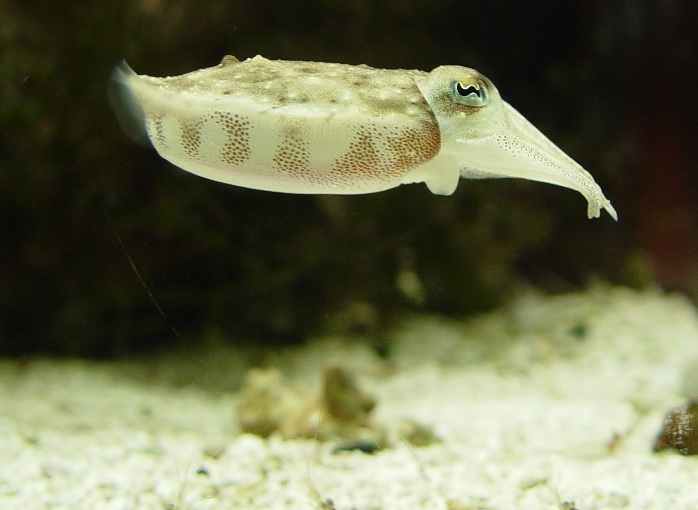
And in close-up: notice the iridescent eyes, the siphon pointing down
under the head, the rock-like mottled back, the white belly with red
speckles, and the skirt/fin.
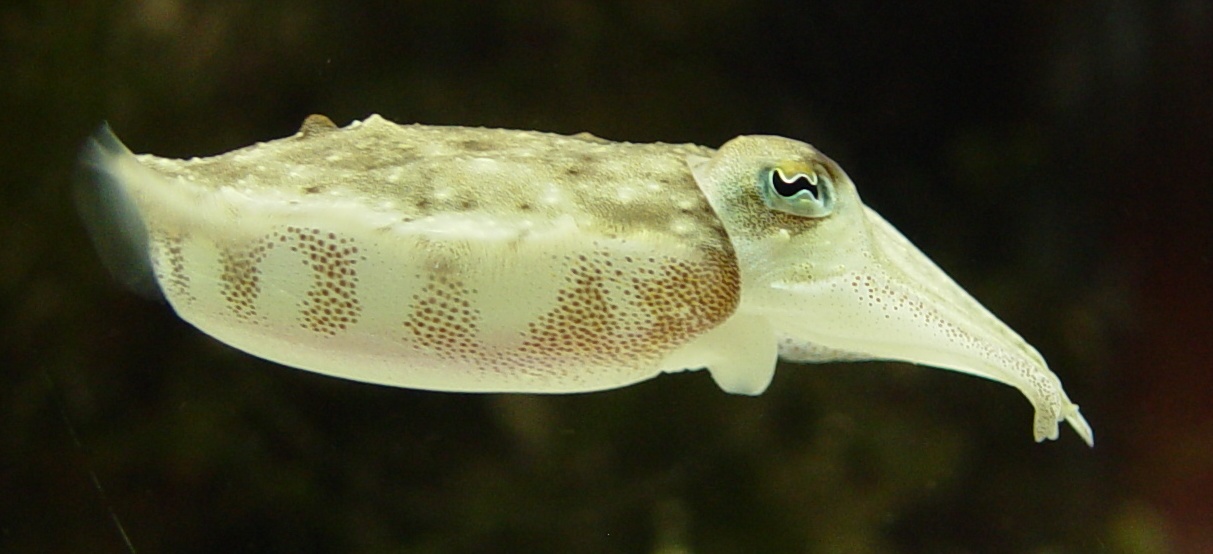
Here is one lying on top of the sand. You can barely see the spots in
the white region of the belly which might turn into large red spots if
the animal allowed it. The colorful and iridescent eye is also clear.
The skirt is clearer in the second picture.
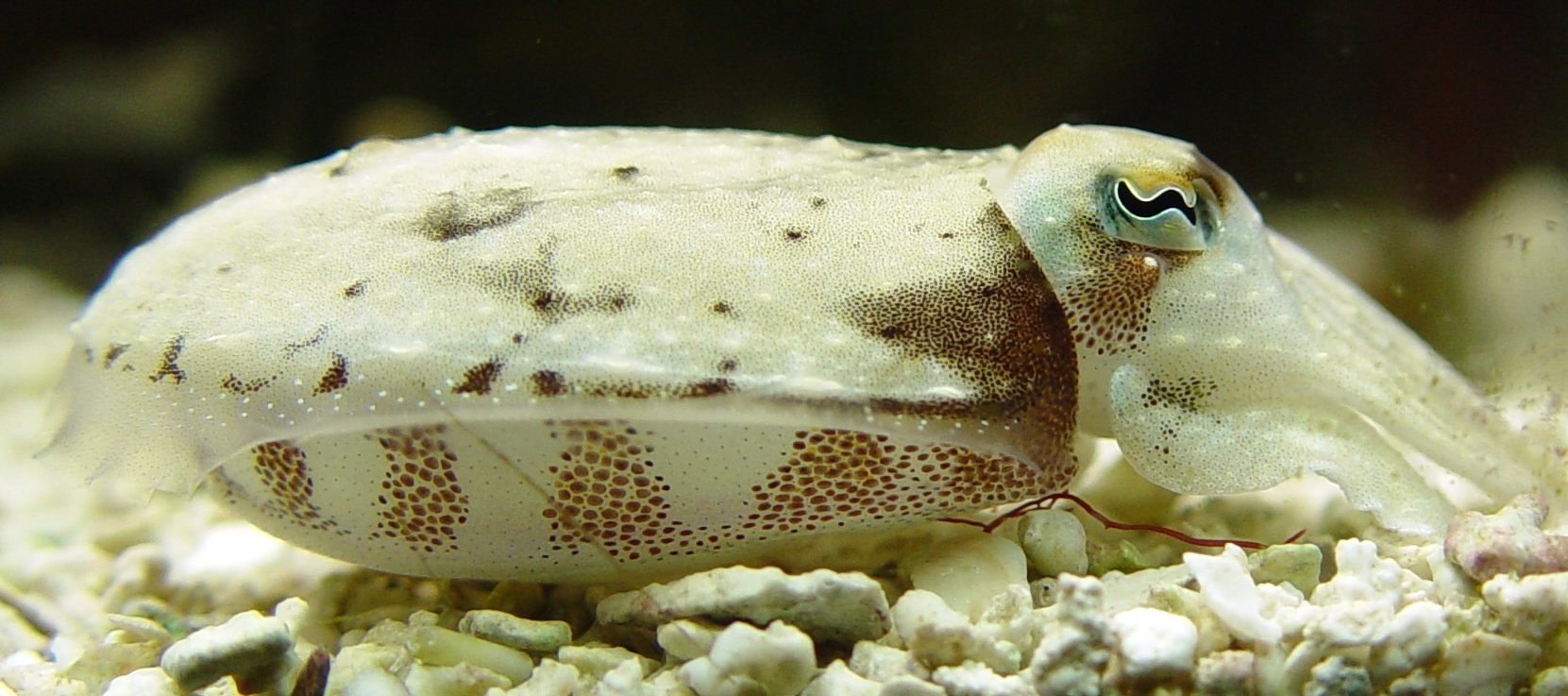
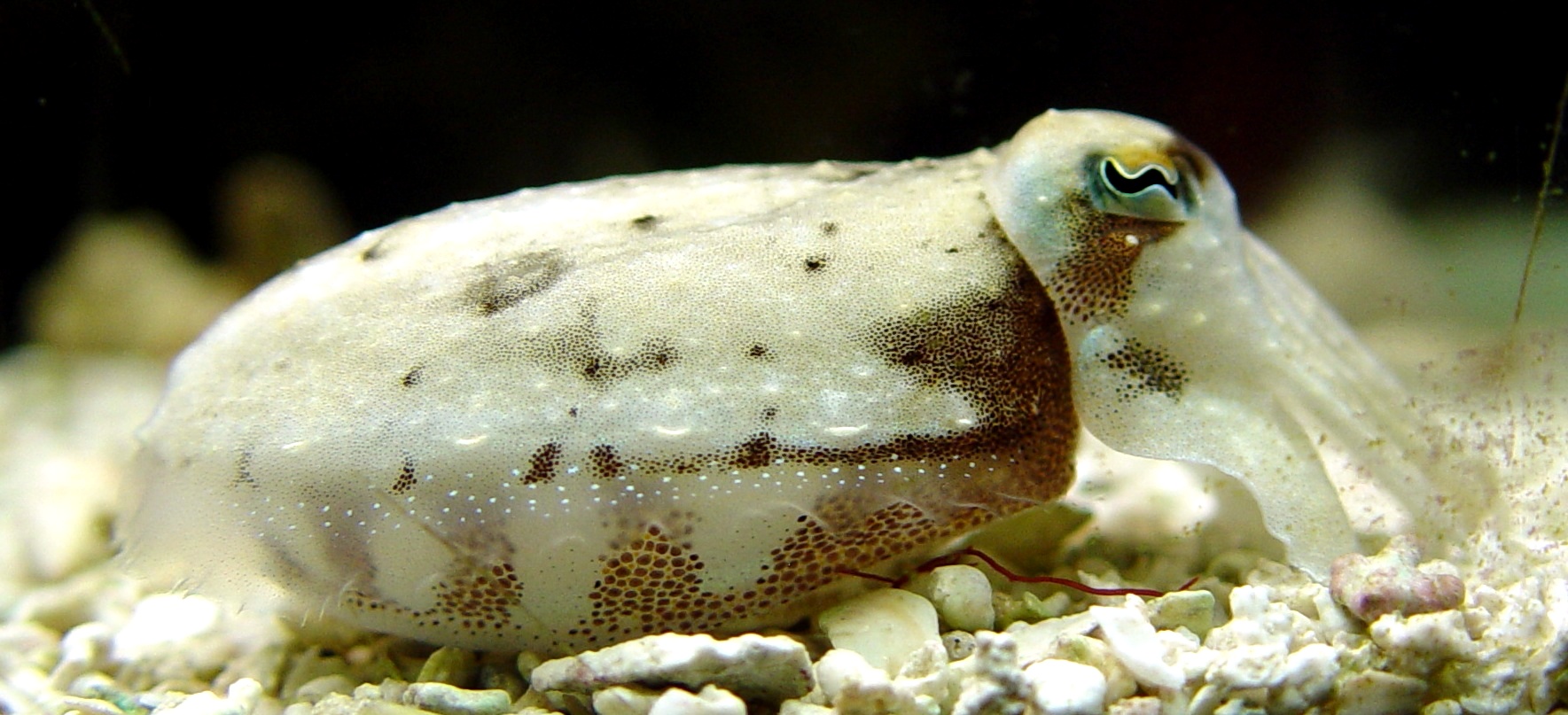
Cuttlefish have eight arms that stick out from the front of their heads.
Often they lie in a bundle pointing straight out from the head, but at
times they are placed in more unexpected configurations. This one has
two pointing straight up, two pointing towards the camera, and four lying
on the sand pointing towards the camera. This configuration is common,
because it allows the mouth to have access between the opened arms.
The key thing here is that the cuttlefish has two more tentacles
that usually lie coiled up in their mouth. When the cuttlefish sees
prey, it stalks the prey and then launches the tentacles out, to grab the
prey and pull it close enough that the rest of the arms can grab it and
hold it in place.
Thus, this posture is an aggressive pose, that suggest a possible attack.
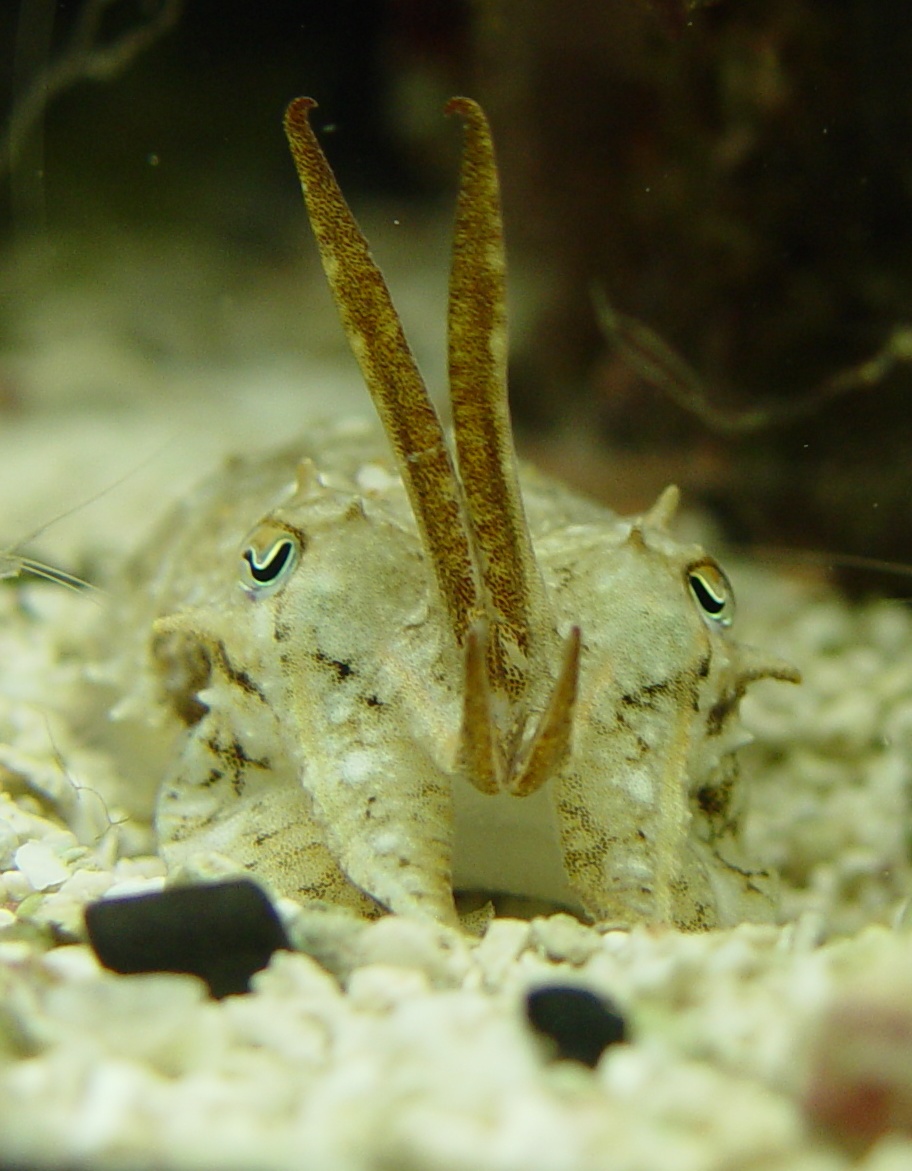
Juvenile cuttlefish, as with young octopuses, will not feed on dead food.
The cost of the animal is usually dwarfed by the cost of the live feeder
shrimp that you need to get them large enough that they will feed on dead
food. The transition from live food to dead food is helped by putting
the dead food on the end of a transparent "wiggle stick" and literally
pushing it into their arms and mouth. After they get a taste of the
food, they figure out that it can be eaten, and you can transition from
live to dead food. Here is a cuttlefish which has finally grabbed the
food, but will not release the wiggle stick.
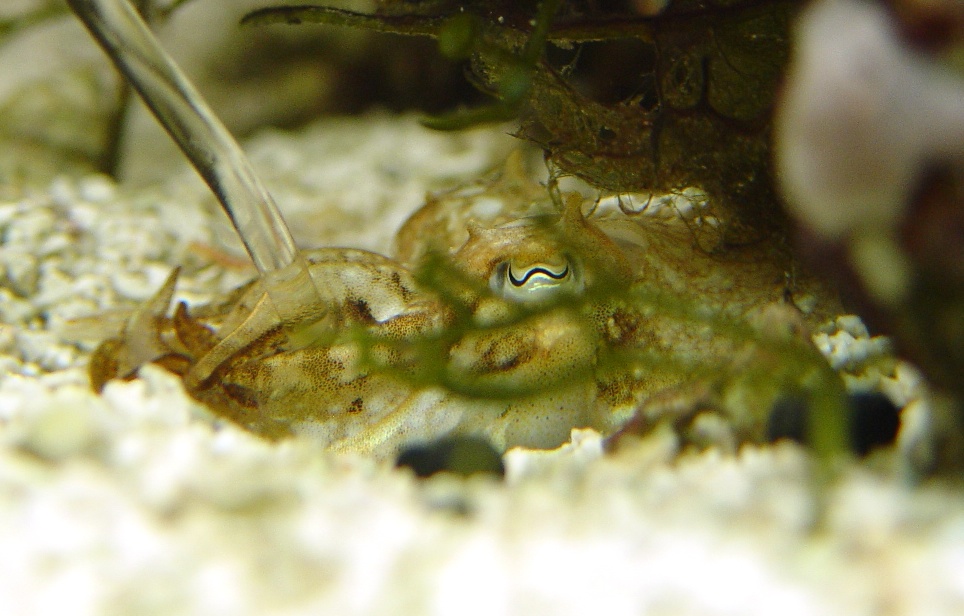
This cuttlefish is wonderfully camouflaged:
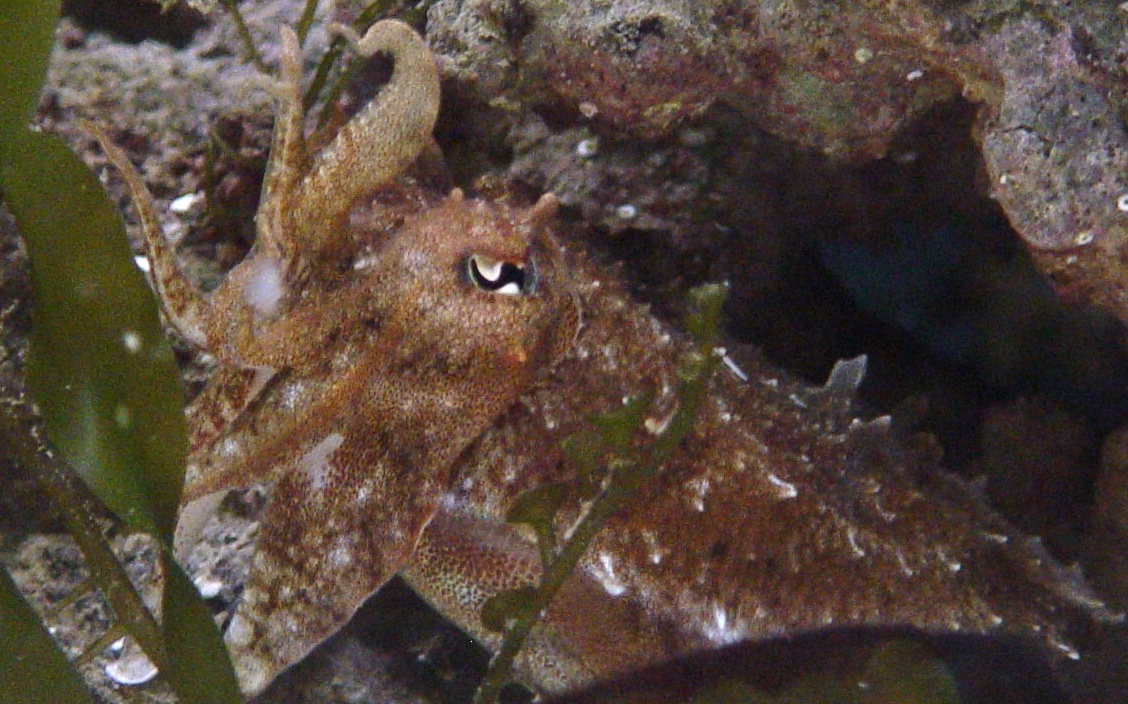
More Cuttlefish Pictures!